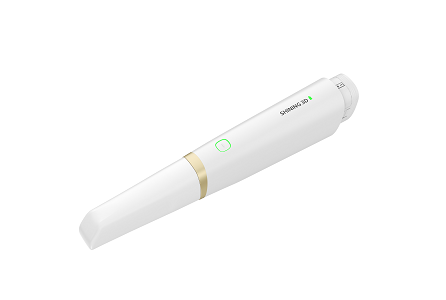In modern dentistry, effective communication between the dental clinic and lab is essential for providing quality care and achieving accurate results. One tool that significantly improves this communication is the dental intraoral scanner. SHINING 3D DENTAL’s innovative intraoral scanners offer more than just high-precision imaging, they enable smoother collaboration, faster workflows, and a more organized approach to patient care. This article explores how a dental intraoral scanner enhances the teamwork between dental clinics and labs, especially through integration with cloud-based platforms.

Streamlined Communication through Digital Data
The most significant advantage of using a dental intraoral scanner is the seamless digital transfer of patient data. Traditionally, impressions taken in a dental clinic needed to be physically sent to a lab, where the model would be cast and used for creating restorations. This process was time-consuming, and there was always a risk of errors or delays due to miscommunication or damage during shipping.
With SHINING 3D DENTAL‘s dental intraoral scanner, the data is captured digitally and can be instantly transmitted to the lab. This digital method reduces the need for physical impressions and ensures that the lab receives accurate, high-quality 3D data. It eliminates the delays and potential issues related to traditional methods, improving overall efficiency and accuracy in the process.
Cloud-Based Platforms for Improved Coordination
Cloud-based platforms are an essential part of the dental intraoral scanner’s ability to connect clinics and labs. After the scan is completed, the digital impression can be uploaded to the cloud, where both the dental clinic and the lab can access it in real time. This enables the team at the clinic and the lab to collaborate more effectively and ensure that any adjustments or feedback are communicated immediately.
SHINING 3D DENTAL’s integrated cloud system makes it easier for dental professionals and lab technicians to work together, regardless of their physical locations. The cloud platform also offers secure storage, ensuring that all patient data remains protected while remaining easily accessible for future reference.
Reducing Errors and Enhancing Efficiency
The dental intraoral scanner simplifies the process of providing feedback or making corrections. Since digital scans are much more precise than traditional impressions, there is a reduced risk of errors, such as gaps or distortions. If any part of the scan requires reworking, the scanner’s advanced software allows for quick corrections and automatic retracing, so the lab receives updated data instantly.
This level of accuracy not only saves time but also ensures that the final product—whether it’s a crown, bridge, or implant—fits perfectly. By removing the need for multiple physical adjustments or remakes, both the clinic and lab benefit from improved workflows and better outcomes.
Enhancing the Patient Experience
With the dental intraoral scanner, patients benefit from a more comfortable and efficient experience. There’s no need for messy impression materials, which can be uncomfortable and time-consuming. The faster, more accurate digital impressions reduce the number of follow-up appointments needed, which improves patient satisfaction.
Since the digital data can be quickly sent to the lab, patients can expect faster turnaround times for their dental restorations, reducing the overall treatment time. This quick turnaround benefits dental professionals as well, ensuring that patient care is provided in a timely manner.
Conclusion
At SHINING 3D DENTAL, we understand the importance of seamless collaboration between dental clinics and labs. Our dental intraoral scanner enhances communication, reduces errors, and improves the efficiency of workflows. By leveraging cloud-based platforms for real-time access to patient data, dental professionals and labs can work together more effectively, ultimately leading to better outcomes for patients.
 ENG
ENG








